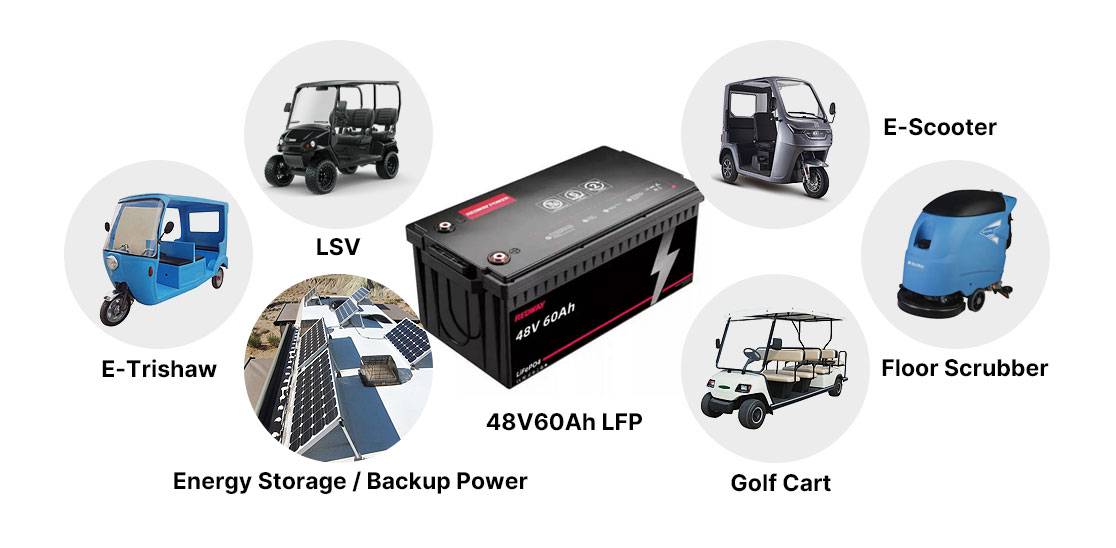Everything You Need to Know About 48V 8D Lithium Battery
Introduction
In today's rapidly advancing technological landscape, the demand for efficient and sustainable energy storage solutions has never been higher. One such innovation that has garnered significant attention is the 48V 8D Lithium Battery. This rechargeable battery, operating at 48 volts and falling within the 8D size category, represents a paradigm shift in energy storage technology. Its exceptional features, including a longer lifespan, high energy density, lightweight design, and fast charging capabilities, have positioned it as a versatile and reliable option for a multitude of applications across various industries. In this comprehensive guide, we delve into the intricacies of the 48V 8D Lithium Battery, exploring its technology, advantages, applications, and future trends. Join us as we unlock the power and potential of this groundbreaking energy storage solution.

Advantages of 48V 8D Lithium Battery
Longer Lifespan: Offers a longer lifespan compared to traditional batteries.
High Energy Density: Provides high energy density, resulting in more power output.
Lightweight and Compact: Despite its power, it is lightweight and compact, making it ideal for various applications.
Fast Charging: Charges quickly, reducing downtime and increasing efficiency.
Applications of 48V 8D Lithium Battery
Automotive Industry: Used in electric and hybrid vehicles.
Renewable Energy Systems: Provides storage for solar and wind energy.
Telecommunications: Powers backup systems for remote sites.
Industrial Equipment: Used in forklifts and warehouse equipment.
The Technology Behind 48V 8D Lithium Battery
Composition of 48V 8D Lithium Battery
Lithium-Ion Cells: Utilizes lithium-ion cells for energy storage.
Battery Management System (BMS): Monitors and controls the battery's operation.
Voltage Regulation: Maintains a stable voltage output.
Working Principle
Charging Process: Charges efficiently to store energy.
Discharging Process: Releases stored energy when needed.
Safety Features
Thermal Management: Regulates temperature to prevent overheating.
Overcharge Protection: Prevents damage from overcharging.
Over-discharge Protection: Preserves battery life by avoiding complete discharge.
Advantages of 48V 8D Lithium Battery Over Traditional Batteries
Energy Efficiency: Provides higher energy efficiency compared to traditional batteries.
Environmental Friendliness: Produces fewer emissions and reduces the carbon footprint.
Cost-effectiveness: Offers long-term cost savings due to its durability and efficiency.
Maintenance: Requires minimal maintenance, reducing operational costs.
Versatility: Can be used in various applications across different industries.
Applications in Various Industries
Automotive Industry
Electric Vehicles (EVs): Powers electric vehicles for clean transportation.
Hybrid Vehicles: Used in hybrid vehicles for improved fuel efficiency.
Renewable Energy Systems
Solar Energy Storage: Stores energy generated from solar panels for later use.
Wind Energy Storage: Provides backup power for wind turbines.
Telecommunications
Backup Power Systems: Ensures continuous operation of telecommunications infrastructure.
Remote Sites: Powers equipment in remote locations where grid power is unavailable.
Industrial Equipment
Forklifts: Powers electric forklifts for indoor material handling.
Warehouse Equipment: Provides energy for various warehouse operations.
Factors to Consider Before Choosing a 48V 8D Lithium Battery
Capacity Requirements: Determine the required capacity based on energy needs.
Voltage Compatibility: Ensure compatibility with existing systems and equipment.
Size and Weight: Consider space limitations and transportation requirements.
Budget Constraints: Evaluate upfront costs and long-term savings.
Warranty and Support: Choose a reliable manufacturer with good warranty coverage and customer support.
Future Trends and Innovations
Advancements in Battery Technology: Continuous improvements in battery technology for better performance and efficiency.
Integration with Smart Grids: Integration with smart grid systems for more efficient energy management.
Development of Solid-state Batteries: Research and development of solid-state batteries for enhanced safety and performance.
Increased Adoption in Electric Mobility: Growing adoption of electric vehicles and other electric mobility solutions.
Focus on Sustainability: Emphasis on sustainable battery manufacturing and recycling processes.
Conclusion
In conclusion, the 48V 8D Lithium Battery represents a significant advancement in energy storage technology. With its numerous advantages over traditional batteries and its wide range of applications across various industries, it is poised to play a crucial role in shaping the future of energy storage and electrification. As we continue to innovate and improve upon existing technologies, the potential for further advancements in battery technology is limitless.
FAQs
- How long does a 48V 8D Lithium Battery last?
- The lifespan of a 48V 8D Lithium Battery can vary depending on usage and maintenance but typically ranges from 5 to 15 years.
- The lifespan of a 48V 8D Lithium Battery can vary depending on usage and maintenance but typically ranges from 5 to 15 years.
- Can a 48V 8D Lithium Battery be recycled?
- Yes, lithium batteries, including 48V 8D Lithium Batteries, can be recycled to recover valuable materials and minimize environmental impact.
- Yes, lithium batteries, including 48V 8D Lithium Batteries, can be recycled to recover valuable materials and minimize environmental impact.
- What is the charging time for a 48V 8D Lithium Battery?
- The charging time varies depending on factors such as the charger's capacity and the battery's state of charge, but typically, it charges faster compared to traditional lead-acid batteries.
- The charging time varies depending on factors such as the charger's capacity and the battery's state of charge, but typically, it charges faster compared to traditional lead-acid batteries.
- Are 48V 8D Lithium Batteries safe to use?
- Yes, 48V 8D Lithium Batteries are designed with various safety features such as thermal management, overcharge protection, and over-discharge protection to ensure safe operation.
- Yes, 48V 8D Lithium Batteries are designed with various safety features such as thermal management, overcharge protection, and over-discharge protection to ensure safe operation.
- Can a 48V 8D Lithium Battery be used in extreme temperatures?
- While lithium batteries perform well in a wide range of temperatures, extreme temperatures can affect their performance and lifespan. It's essential to follow manufacturer guidelines and use proper thermal management systems in extreme conditions.
